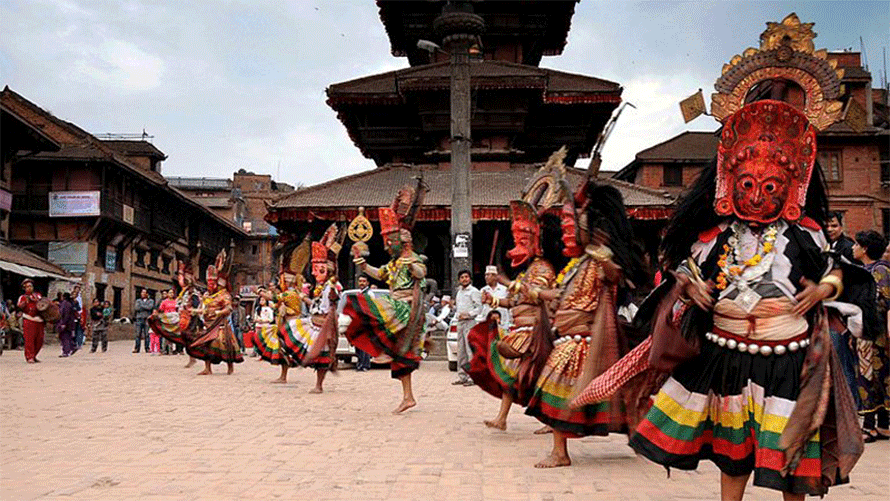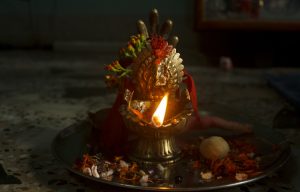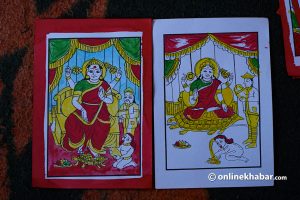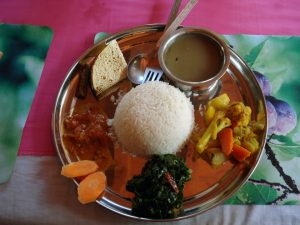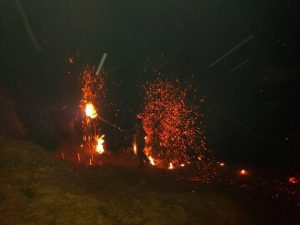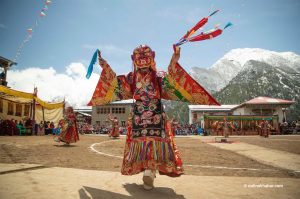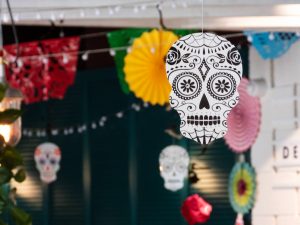The Navadurga Naach, a centuries-old dance performed by masked men in the ancient town of Bhaktapur, reaches Changunarayan today. This includes a troop of 25 people, 13 Devganas and their helpers that reach the Changunarayan Temple, barefoot, on the Magha Krishna Panchami (fifth day of the waning moon), every year.
This is a part of the nine-month-long annual festival in the town that begins every Asoj (September/October, in the autumn, during Dashain time) and ends in Asar (June/July), in the summer or monsoon).
It has been continued to date, year after year, with much fanfare and celebrations. However, it is now beginning to be surrounded by a lot of speculations about its future.
Rich tradition of cultural exchange
This dance had supposedly started during the Malla period when the Rajopadhyaya clan started residing in Bhaktapur. The dance also is majorly conducted and performed around different parts of Bhaktapur, starting from Suryamadhi.
The people who are chosen as Devganas are also locals of Bhaktapur, locally called Gathu or Gaathaa (aka Malaakar or Banmaala:). The dance is also locally referred to as Gathu Pyakhan.
The 13 Devganas are Mahakali, Kumari, Barahi, Brahmayani, Maheswori, Vaishnavi, Indrani, Shiva, Ganesh, Bhairav, Shwet Bhairav, Sima, and Duma, each represented by a masked man.

It is locally believed that the dance is performed for the peace and security of the people and the state, and to free them from any disease. The Devganas reach from places to places, performing their dances, especially for those who cannot travel on their own.
After Changu today, they also go to Banepa and Naala, east of Bhaktapur, for the same.
When Devganas perform their dances it also becomes a means of entertainment, as they are enjoyed by people of all ages. It carries centuries of storytelling and heritage, unique to the valley.
Despite the lack of manuscripts, particularly in Changu, main priest of the temple, Chakra Dharananda Rajopadhyaya, comments that bringing the dance from Bhaktapur to Changunarayan can be taken as a form of a bilateral relationship. “In the past, Bhaktapur and Changunarayan used to be separate kingdoms. So, it makes sense that the people from there came all the way to Changu to maintain the cordial relationship.”
It means the dance has become a connector among different parts of the ancient town for the ages.
The priest also says, “During this event, Bhairav and Changunarayan and Bhairav and Chinnamasta exchange pujas (prepared by Karmacharya guthiyars) with each other. This shows a form of greetings that one does with the hosts. And, this gives an insight to the relationship they share.”
Some interesting rituals
During the festival, the Devganas reach the Changunarayan temple from Sankhu and enter the temple from the eastern gate. They first take rest at a phalchaa (patio) and offer their respect to Ganesh temple, on the roadside. Thereafter, they ascend towards the main temple, dancing along the way. Upon reaching the top, the Devganas perform a small puja according to tantric beliefs, perform their dance and offer their greetings to the deity, Changunarayan.

“Inside the Changunarayan Temple premises, there is a temple of Chhinnamasta Devi where the Bhairav, Mahakali and Barahi exchange greetings and perform their dance,” explains Rajopadhyaya, who has been the main priest in the temple for more than 11 years now, after his father.
They, then, try to enter the inner side of the Changunarayan Temple from the east. Here, if they fail, then they try again from the east. “If the Devganas manage to enter the temple, where even the main priest has restrictions, we cannot take them out, with force. Only after doing a Panchakaali puja can we draw them out,” says the priest.
This interesting phenomenon, says the priest, has almost never happened. “Only once or twice in a lifetime, the Devganas enter the temple. It all depends on the state they are in.”
If the do not enter the temple, they exit the premises through the western gate to Ku:chhen Tole. There, he explains, the guthiyars (members of the guthi) offer them puja.
They re-enter the temple premises from the west. The Devganas go around the main temple while the Bhairav goes to the northern side to perform his special dance and puja. Then, they all move towards the Chinnamasta temple and perform a section of this dance, also known as Kumari Tulya Naach that weak-hearted are recommended to avoid watching. Then there, they rest up for the day.
Next day, at the east gate, the locals and guthiyars do puja and there also the dance is performed. On this day, a specific event is organised. “Throughout the year, the pigs are not allowed to enter or be touched inside the temple. However, on this day, a pig is brought in by the guthiyars as a part of sungur baha: puja, a sacrificial ceremony, where the Devganas chase and catch the pig for the sacrificial ceremony. This pulls in a lot of crowd and fervour among them,” explains the priest.
“The Devganas also drink raw blood of the pigs while the spectators are given dahi chiura, a mixture of beaten rice with curd. Meanwhile, the guthiyars also offer a separate bhwoe (feast) for the Bhairav,” informs Rajopadhyaya.
Here, another attraction of the ceremony, Nyaa: lakegu (to catch the fish) is conducted. “The guthiyars bring fish that is tied inside a bamboo-strip box. They throw the box while the people try to catch the fish. They do the same for three times,” explains Rajopadhyaya.
In the past, the Devganas used to stay at Changu for two nights and three days. But, nowadays, they only stay one night and two days. The nitty-gritty of the traditions and rituals, however, have not changed.
Concerns about future
However, many people who have been familiar with the tradition express concerns over the future of the tradition.
One such concern is of Jagat Lal Shrestha, a 71-year-old local of Changu.
“A lot of people have moved out. The core population is of Newa: community, but it has been shrinking. Navadurga Naach is a tradition that has been continuing since its start. But now, people are taking upon fewer responsibilities of the tradition.”
Shrestha complains the Guthi Sansthan has also stopped supporting this tradition. Whatever is left is being carried on by the little help of local government officials and community people, which is not enough.
Shrestha fears there could be some day when the dancers fail to reach Changu.
He adds, “A similar Navadurga Naach (with men from Dangol or Jyaapu clan behind the masks) used to be brought to Changu from Kathmandu every 12 years. However, now, it has been discontinued for many years. And many do not even know about it.”



